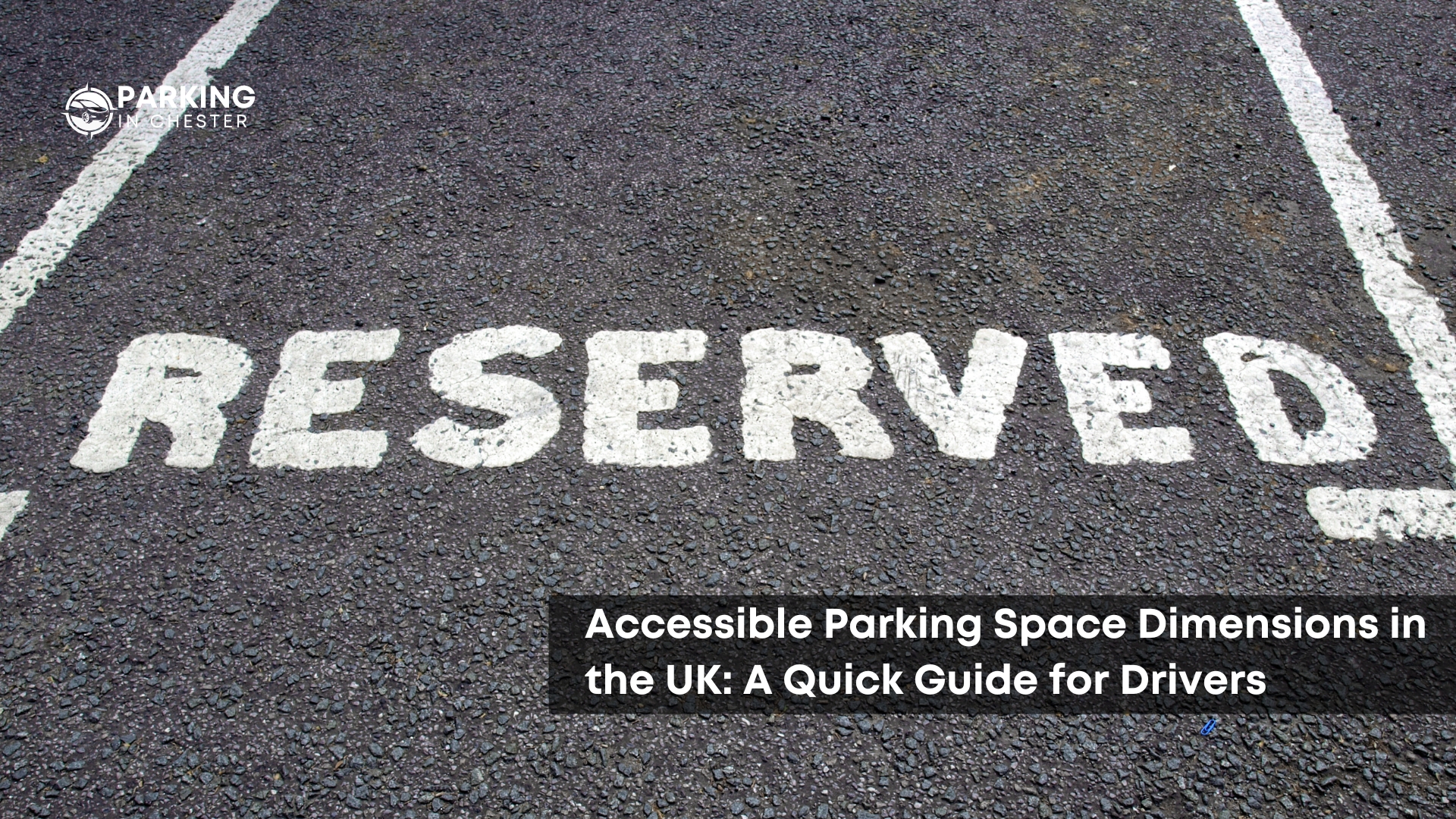Have you ever wondered how much space a disabled driver truly needs to park safely? At Parking In Chester, we know that accessible parking space rules can be confusing for many drivers, especially those who do not need to use them personally. Whether you are parking in a supermarket, residential area or disabled car park, it is important to understand the correct sizes and rules around disabled car parking spaces. Everything starts with knowing what the standard layout looks like.
What Are the Standard accessible Parking Space Dimensions in the UK?
Yes, there are standard dimensions for accessible parking spaces in the UK. A typical accessible parking space is at least 2.4 metres wide with a 1.2 metre access area on either side, often totalling 4.8 metres in usable width. The wheelchair parking space must also allow room for ramps or hoists, especially in public areas. These clearances ensure access is safe and practical for users with mobility needs. Still, these spaces are not just wider for convenience.
Why Are Disabled Parking Bays Larger Than Regular Spaces
Disabled bays are larger to provide extra room for people who need to exit the car slowly, use walking aids or deploy a wheelchair ramp. Yes, this extra space is essential for mobility and safety, especially when getting in or out of the vehicle. Unlike regular bays, disabled car park spaces must allow for sideways movement around the vehicle. That extra width becomes even more important when accommodating wheelchairs and ramps.
How Much Extra Space Is Required for Wheelchair Access
Yes, wheelchair users require more space than most vehicles typically offer. The wheelchair parking space often needs an additional 1.2 metres of clear space next to the vehicle to unload and manoeuvre a wheelchair safely. This space should be flat, unobstructed and marked with cross-hatching. These side access zones ensure the space functions as intended, but not every car park treats them the same way.
Are Accessible Parking Space Sizes the Same Everywhere
No, disabled bay sizes can vary depending on the location. While most public car parks follow standard disabled car parking space guidelines, private land may use slightly different measurements. In disabled parking in private car parks, there can be inconsistencies in both layout and enforcement. Despite the differences, most spaces still aim to follow accessibility best practices outlined in legal guidance.
What Does the Law Say About Disabled Bay Design and Placement
Yes, the law offers guidance, but not all disabled bays are covered by legal requirements. Under the DDA car parking provisions and the Equality Act, public car parks must make reasonable adjustments for disabled access. This includes having marked, accessible disability parking spaces placed near building entrances. The legal side sets the framework, but enforcement comes into play when people misuse these bays.
Can Anyone Use an accessible Parking Space Without a Badge?
No, it is illegal to use an accessible parking space without a valid Blue Badge. These bays are reserved exclusively for those who meet eligibility criteria and display the badge. Parking in a disabled space without permission is considered misuse and can lead to fines. Although this rule is widely known, some drivers still park without authorisation, which leads to serious consequences.
What Happens If You Park in a Disabled Bay Without Permission
Parking in a disabled car parking space without a badge can result in fines, vehicle removal or even prosecution, depending on the location. Yes, even in disabled parking private car parks, there may be enforcement through private parking operators. Offenders can face penalties or be issued tickets for non-compliance. However, different parking environments may not apply rules equally.
Are Private Car Parks Required to Follow the Same Standards
No, disabled parking in private car parks is not always held to the same legal standards as public ones. However, most reputable private car parks follow best practice guidelines to support accessibility. If you are parking in a disabled bay in a private car park, check for signs and markings to ensure the space meets standard width and access requirements. Visual cues and markings can help confirm that the space is properly designated.
How Can You Spot a Properly Marked Accessible Parking Space
A properly marked disabled car parking space includes the wheelchair symbol on the ground or signage, yellow or white outlines, and a cross-hatched access area. Yes, these visual cues indicate that the bay meets access guidelines and is intended for Blue Badge holders. These markings help all drivers recognise which spaces are reserved and why they should remain free for those who need them.
Understanding Accessible Parking Spaces Makes You a Better Driver
Yes, knowing how accessible parking spaces work helps every driver make better parking choices. Respecting disabled car park rules creates a safer and more inclusive environment. Whether or not you have a disability, understanding the purpose of these bays promotes shared responsibility. At Parking In Chester, we believe that being informed is part of being a respectful and law-abiding driver.


Leave a Reply